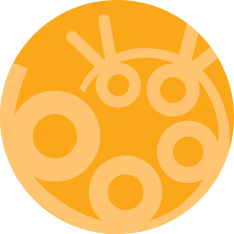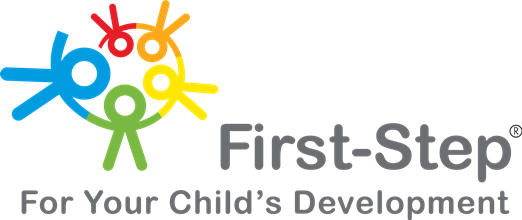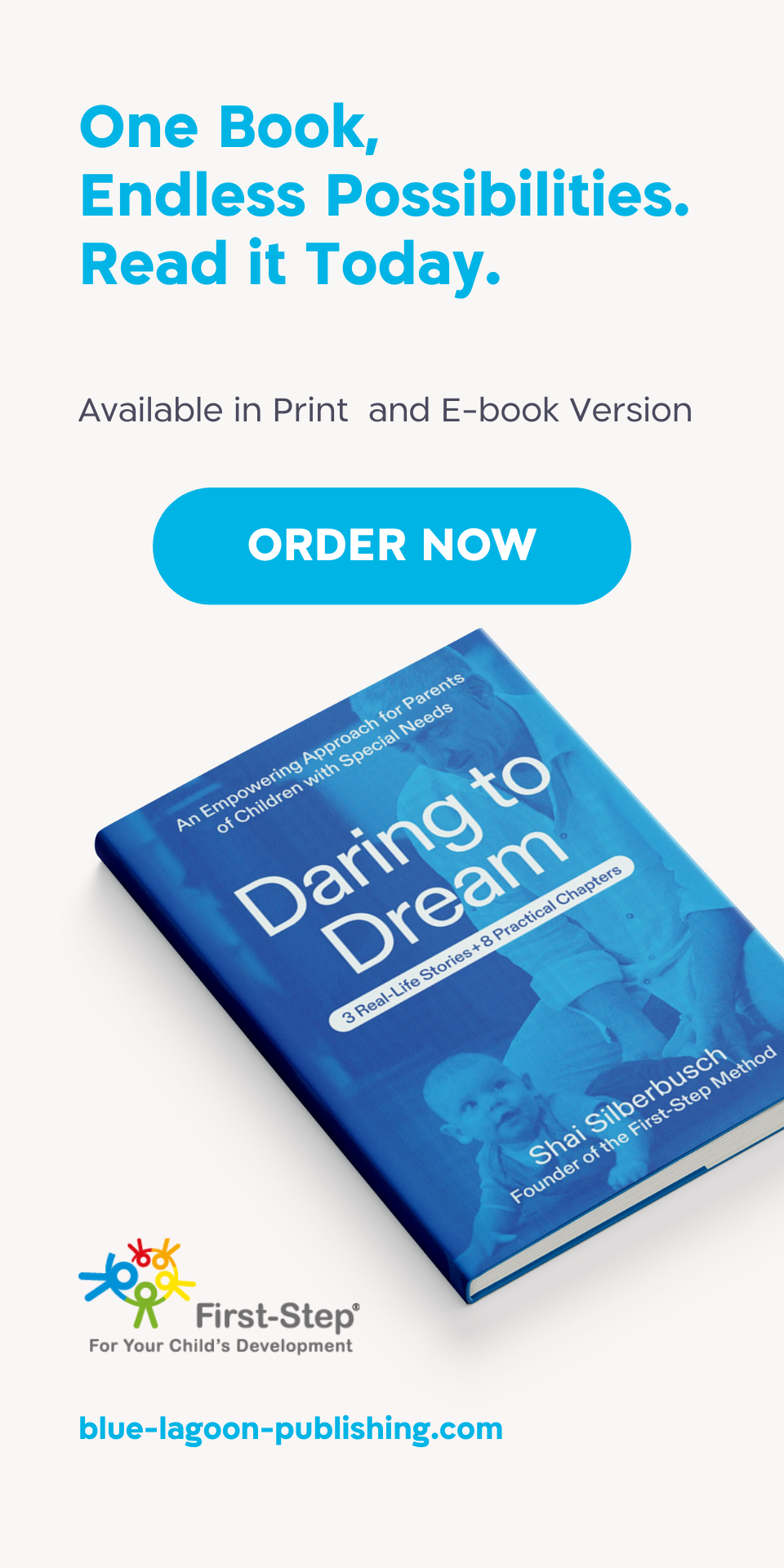
Special Needs
Special Needs – Private Developmental Program
Even children with syndromes and disorders can create new learning pathways that leads to better performance.
Enrico, Loane, Alicia and Giovanni are infants and children who were diagnosed with developmental delays and special needs.
Raising children is certainly tough and complicated, particularly for parents who weren’t prepared for coping with different lifestyle and physical and mental difficulties it entails.
At First Step, we treat children with developmental delays and special needs.
Under that umbrella definition, we address a broad spectrum of disorders, including: genetic syndromes, brain injuries, autism and communication disorders, motor delays and disorders, low muscle tone, epilepsy, severe eating disorders, and ADHD.
From years of experience working with families, we know that when parents obtain information, tools, training, and support, it has a significant impact on their children’s development. It also helps improve their coping skills and the family dynamics. That’s why part of the First Step therapeutic process is an extensive learning process with the parents, as a key to creating change in their children’s development.
At First Step, our motto is that every child can realize his or her potential.
After years of working with many children, our conclusion is that even children with injuries, syndromes, and disorders can learn new functions, overcome their vulnerabilities, and create new learning pathways that lead to better performance.
Read our brochure in English
Read our brochure in French
Read our brochure in Italian
Read our brochure in Russian
How does it work?
At First Step, we generate the correct environmental conditions for the child, and give him/her the appropriate professional training.
Our team first focuses on identifying and exploring each child’s potential and opportunities. Then, through a personally tailored work-process, we strengthen and develop them. During the therapeutic process, we look beyond the child’s problem or syndrome.
Step by step, the child relearns all the processes that he skipped, the absence of which has created (or reinforced) the developmental disorder. As a result, the child is able to dramatically decrease the gap between his/her chronological age and developmental situation.
Learning processes via the First Step method are intensive, and involve the whole family. Dozens of families have gone through this process and outcomes clearly demonstrate their efforts to have been worthwhile.
First Step’s Therapeutic Approach
Each developmental stage leads to the next one, and provides its basis. For every developmental milestone in an infant’s development, there is an important ‘classroom’, where many aspects of neuro-sensory motor development are internalized and embedded. Returning there, relearning those milestones and constantly practicing them encourages the brain and nervous system to improve performance skills. Thus, a solid foundation for the child’s future learning capabilities is put in place.
Working with the child on the process of relearning every skipped development stage – the key to creating change Relearning all the stages and instilling them in the brain is what enables behavioral change.
Take the example of a six-year old whose developmental level is appropriate for the age of five months. Instead of saying – ‘At his chronological age, he should be walking, so we’ll teach him how to walk’. First Step focuses on the child’s actual developmental stage and builds from there. In this case, we begin working with skills appropriate for the developmental stage the child didn’t go through, such as lying on his tummy, rolling over, or sitting up unassisted. Step-by-step we move ahead until his developmental age catches up with his chronological age. For the child, this means that suddenly, he receives information relating to the place where he is; he can incorporate it and, more importantly, learn to respond to it.
Another example illustrating the success of this approach is found in four-year old Jimmy who, before attending First Step, would only move forward by crawling on his bottom. During the process of work with him, the First Step team began by diagnosing and removing the environmental conditions that encouraged and sustained such movement. Following which, they began building the tools of successful movement from the beginning. First, by giving Jimmy the tools to crawl properly and then, guiding him to stand independently and lastly achieving the chronological age expectation of walking. Jimmy’s story is one of many successful life changing cases that the First Step method has been able to address.
Even in cases of brain injury or different syndromes, learning ability exists
Even if born disabled, a child doesn’t necessarily remain restricted for lifetime. When given the right stimuli, the brain responds and can reorganize the network of its connections. Even if a certain part is damaged, another one can take its place, and replace old cells with new ones. Through learning, the network of connections in the brain can be reorganized, more sophisticated development capabilities can be developed and results achieved. The child learns how to stop using the incorrect behaviors she adopted because of her disorder (and her parents learn how to change them) and how to create new functions, appropriate for the stage where she is.
The First Step program has 7 key factors which contribute to its success
- Therapy is intensive.
- Creation of an appropriate developmental environment is imperative.
- The therapy must be integrated both in the cognitive-motoric functioning of the child and in the lifestyle, environment and approach of the family.
- Each individual factor relating to the current situation must be addressed and if necessary deconstructed and reconstructed.
- Parents are involved as partner therapists.
- Communication between all those involved in the child’s development must occur.
- The First Step method encourages the integration and incorporation of other disciplines that can enhance the experience for the child.
Therapeutic intensiveness
The First Step method uses intensive processes.
The therapeutic process must first neutralize the flawed functioning patterns that prevent children from learning. Next, it must replace them – in a short time-frame – with new, high-quality learned patterns. That’s why we work with the child and family intensively, with enhanced practice, repetition, and assimilation.
Creating a developmental environment
The developmental environment generates the right stimuli for correct neuro-sensory motor learning. It comprises the parents, siblings, the extended family, the child’s friends, the nursery-school or school staff, and the home itself. Interacting with the correct learning environment is a vital and influential aspect of the child’s development, and a central part of the First Step team’s therapeutic thinking. Often the therapist does not approach the child directly in the therapy process, and instead works towards changing the parents’ behaviour, or family habits at home. We analyse the child’s daily life in the environment, in motor and behavioural terms, and guide towards changes.
Take the example of a child who still isn’t walking and relies on his parents in order to move around within space. Here, we instruct those around him to stop being a dependable prop, and instead to become a dynamic prop, that forces him to cope with his balance system, to develop the right reflexes, and learn to rely on himself, not on ‘the crutches’ of those around him. His nuclear family and regular caregivers acquire different habits for use with the child, and the repetition and practice process becomes an integral part of daily actions and routine habits. When a child who is accustomed to being passive in the getting-dressed process – we guide parents so that a routine practice becomes a learning process carried out in the home environment, and is defined as a therapeutic goal.
Therapeutic Integration
The First Step therapeutic method combines all developmental elements: motor, sensory, behavioural, emotional, social, and familial. It works with everyone together, and each one separately, using a wider peripheral perception of all systems involved. Our therapy language and therapeutic axis is the neuro-sensory motor language: through it, we can access wider aspects of development.
Example: In one specific case, we identified that the source of a child’s speech difficulties lay in the fact that he had not learnt how to create eye contact with the environment. When there are eye contact problems, children find it hard to learn by imitation, because imitation requires organised, correct eye contact. We worked with him to develop the skill of reaching for an object, one of the first skills that requires eye contact.
Once he had mastered this, we worked to develop skills allowing him to hold and eventually play with the object. The result achieved was apparent – a nervous system that is better organised, receptive to learning and able to support the on-going process of addressing his speech difficulties.
Deconstructing a function
The First Step method lets us identify and isolate each development factor individually, and to understand the cause and effect relationship.
Parents as significant partners in the therapeutic process
Parents are an integral part of the First Step therapeutic process. Their collaboration is essential for the success of the child’s therapy. And so after the child is diagnosed, we also diagnose various interactions, such as how the parents play with the child, their response to the child’s difficulties and degree of support. Observing the parents’ activity with a child reveals a lot about the child’s development dynamic. In the First Step method, parents are also therapeutic figures for the child, and so we train them on introducing therapeutic principles into everyday life and every shared activity with the child. An example of this aspect of work at First Step, was a child with the functional problem of being unable to hold food and eat it on her own. To impart those skills, we had to regress with her to the stage of eating with the hands. It transpired that for cultural reasons the parents did not let her eat using hands. Once they received an in-depth explanation why eating with the hands is an important developmental value, they changed their habits and behaviours, and created a different developmental environment for the child, through which she acquired the skills of holding and eating food independently.
Communication between all factors in the therapy
First Step’s extended local team always aspires to professional coordinated communication with everyone involved in caring for the child: the nanny, the kindergarten and even the way the home is run. This work method enables an overall professional perception, and of course provides parents with the strong confidence that they have an address for questions and consultations, during the therapeutic process, and between therapy sessions. Every First Step therapeutic process has a Process Manager – the liaising person who sees the whole picture.
Multidisciplinary professional team
In addition to the therapeutic programme of First Step method experts, other professionals also form part of the extended team at First Step. They include physicians, neurologists, a psychologist, a physiotherapist, an occupational therapist and a speech therapist. At First Step we are strong believers in the group practice method, which provides professional added value and maximises the efficacy of therapy.
The Therapeutic process
Stage 1: Questionnaire and clarifying needs
The family receives the First Step questionnaire, fills it out and returns it, together with medical documents and a short recent video.
After Shai Silberbusch and the First Step staff study the case, the decision is taken whether the First Step method can offer therapeutic help to the child and family.
Stage 2: The Integrative Diagnosis
We use the integrative diagnosis method at First Step. It’s based on a study of the correlation between emotional and sensory development,skeletal structure, the muscle system, and the child’s sensory interaction with the environment.
The diagnostic emphasis is on the child’s potential, not only the disorder or problem.
Usually, the diagnostic process starts with questions about the pregnancy and birth, developmental problems, medical diagnosis and so on.
Stage 3: Drawing up the Therapeutic Programme
After the diagnostic process, the therapeutic team convenes and crystallizes a wide-ranging plan for therapy, which is then submitted for the family’s approval.
Stage 4: Intensive Treatment Process
This stage can be performed in Tel Aviv, or in the family’s country – as the family prefers. The process takes from a week to a month, with 6 to 8 hours intensive daily work with the child and parents. Ahead of the process, the family home becomes a therapeutic centre which includes all the equipment needed.
If the process is conducted in Tel Aviv, training takes place in several sites: the First Step centre, the family’s rented apartment, the beach,playgrounds, a local park and so on. Throughout the day, the staff documents events, and feedback is given at the end of each day. Data is collected on a central server, and can be accessed and used in real-time by all staff-members.
Stage 5: Back to Routine – Equipped With a Toolbox
At the end of that initial intensive process, the family receives a workplan and a full toolbox. The task ahead of them is to apply in routine life everything they learned in the intensive therapy stage. To continue the process, they must use the tools, understandings, and skills they acquired. The First Step team continues accompanying the family on an ongoing basis.
Stage 6: Implementing the Process at Home
After the initial intensive process, the therapist who accompanied the family through it, comes to the family’s home for a week, for further therapy. The family makes the needed adjustments for childcare in the home, in accordance with their lifestyle, and the therapist continues to guide the parents and other family members. In many cases the therapist meets other caregivers such as physiotherapists, ergotherapists,and occupational therapists, and works jointly in synchronicity with everyone involved.
Stage 7: Follow-Up Sessions and Training via Video Software
Once a week, the family participates in a training session by Skype. The therapist observes the interaction of the child and family, and performs any needed adjustments. Together, they decide, ask questions, and so on.
In Summary….
At the end of the process, the family returns to routine life, equipped with an effective toolbox that provides them with developed arentaltherapeutic skills.
If they make the utmost use of the process, they’ll become more and more independent in their ability to help the child, able to maximize her capabilities and lead a life that’s better balanced alongside the disabilities.
The Options for Therapy
In Tel Aviv
Participating in the therapy process in Tel Aviv provides the optimum conditions – in the designated apartment and at the First Step centre that’s specially equipped for the process. Throughout the process, Shai Silberbusch and First Step’s team of experts oversee and guide the process as it unfolds. Supervised meetings with other children take place at the Centre in Tel Aviv, creating normative social interactions.
The family takes a time-out from routine life with its daily tasks, and can focus their attention on the intensive therapy process. The weather in Tel Aviv, sunny for much of the year, means that work goes on outside – on the beach and in playgrounds – so the process is an enjoyable one.
Usually the process is conducted in English. If necessary, First Step’s team of interpreters in various languages are available to help: they join the process and help the family on language questions.
Therapy in the family home or country of origin
If the family is unable to come to Tel Aviv, the process can be offered within the family home or at a First Step centre in Europe.
Results
At First Step, we can promise you one thing: a process. A professional, quality, meaningful, family process. We know from experience that hard work, faith in your child and yourself, internalising the therapeutic tools you acquire, persevering and applying them in your daily life will bring results, progress, and improvement.
Brochure photos by: Anda Yoel

